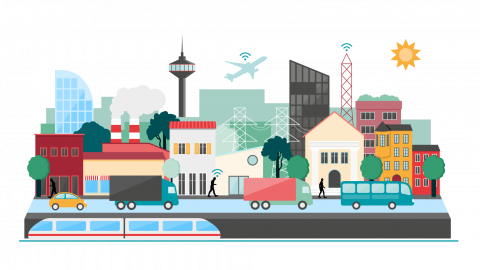Description of Delivery:
Brønnøysundregistrene develops and maintains digital services that coordinate the dialogue between public organizations, private individuals, and companies, making it more efficient and simplified. Brønnøysundregistrene manages several of the most important registries in Norway.
Over the past years, Brønnøysundregistrene has built and deployed a new platform to support all registries delivered through BRsys. This new platform has been designed as a local Platform as a Service (PaaS), utilizing modern container technology to support a Microservices Architecture (MSA) and an agile development/deployment methodology.
State-of-the-Art Container Platform:
The platform is built using the Red Hat OpenShift container platform (OCP), Kubernetes, and Docker technology. All services developed support a Cloud Native approach, but are currently being run on Brønnøysundregistrene's on-premise data centers.
The platform is hosted, maintained, and further developed by Brønnøysundregistrene's platform team. Redpill Linpro, in close cooperation with Red Hat, has supported the platform team with additional capacity, as well as services to increase knowledge and support the further development and rollout of the container platform.
Open Source Database Solution:
Brønnøysundregistrene has further decided to use an Open Source based relational database for the BRsys applications. They made the decision to use PostgreSQL as the preferred RDBMS for BRsys. Redpill Linpro initially assisted Brønnøysundregistrene with architectural advice, establishment of various test environments, configuration, and migration.
Redpill Linpro has also taken particular responsibility for maintaining the Ansible roles used for installation, configuration, upgrade, and deletion of PostgreSQL instances.
Brønnøysundregistrene and Redpill Linpro have further developed new methods that will be used to deliver PostgreSQL on the Red Hat Openshift Container platform.
A dedicated support agreement with 24/7 availability for the PostgreSQL platform is used to support the installation.
New Storage and Automation Platform:
Brønnøysundregistrene adopted Red Hat Ceph Storage (RHCS) and OpenShift Data Foundation (ODF-external) for their storage capabilities. RHCS provided a unified and scalable storage environment, strenghening data redundancy and ensuring high availability. The integration of ODF-external empowered agile data provisioning and management, for optimal resource utilization and rapid application development.
Furthermore, Brønnøysundregistrene is using Ansible Automation Platform (AAP) to orchestrate intricate workflows and streamline IT environment management. This transition to AAP is minimizing manual intervention and optimizing resource allocation.
Delivered Services:
Redpill Linpro together with Red Hat has been an integral part of Brønnøysundregistrene for the entire process from architectural decisions to actual deploy and support of the chosen architecture and platform. Originally focused on architectural guidance and migration pathways from legacy platforms, the scope expanded over time. Services shifted to emphasize hosting, maintenance, and further development of the deployed ecosystem. From Docker images supporting development teams to custom OCP builders, Jenkins-based build and deploy pipelines, Ansible-driven automation, Prometheus and Grafana monitoring, and comprehensive strategies for safety/security backups and replication, the collaborative efforts laid the foundation for a robust digital infrastructure. And now with Infrastructure as Code (IaC) Brønnøysundregistrene has elevated their infrastructure management practices. By codifying infrastructure configurations, they accellerated provisioning, scaling, and recovery processes. IaC facilitated rapid adaptation to evolving requirements, while minimizing errors and accelerating deployment cycles.
The result:
Brønnøysundregistrene's registries play a crucial role in the efficient delivery of public services and efficient cooperation between public organizations, private enterprises, and individuals within society.
As the digital landscape evolves and the demand for innovative digital services emerges, Brønnøysundregistrene continuously reviews their application infrastructure and supporting tooling. Their architecture with containerization, microservices, and agile methodologies, empowers them to swiftly incorporate new functionalities, monitor existing capabilities, and drive innovation without jeopardizing the stability of the core BRsys applications.
With the help of Open Source solutions that ensures flexibility, prevents vendor lock-in, and guarantees cost-effectiveness. Brønnøysundregistrene has successfully positioned themselves for the digitization challenges of the future.




